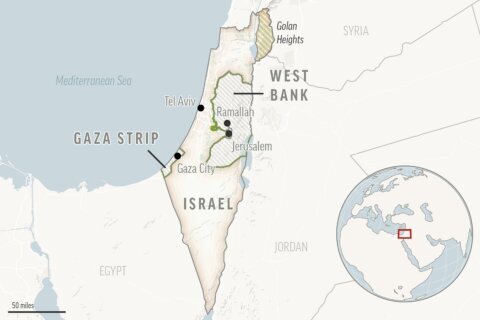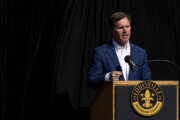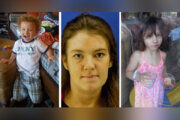JOHANNESBURG — These are anxious days for people such as Sister Krystyna Ciarci?ska. The Catholic nun helps run the Lourdes Mission, located about 60 miles southwest of Durban in the eastern parts of the KwaZulu Natal province in South Africa.
Ciarci?ska has helped the mission develop programs that today support orphans with AIDS, as well as other vulnerable children from the 13 villages surrounding the mission. The Koinonia Orphans Project, for example, gives assistance to more than 900 children, providing them with food, medicine, school uniforms and school supplies. The program also holds biannual community-wide HIV testing days.
Last September, however, Ciarci?ska’s orphan program became a casualty of deepening fears here that U.S. President Donald Trump’s administration will follow through on its goals to cut back U.S. financial support. Funding for her project, received through the South African Catholic Bishops Conference (SACBC), was eliminated.
The SACBC is a beneficiary of funding from PEPFAR — the U.S. President’s Emergency Plan for AIDS Relief — that started in 2003 under George W. Bush’s administration and expanded by Barack Obama. PEPFAR has been a key tool for AIDS prevention and treatment around the world, particularly in Africa.
The financial uncertainty confronting the programs at the Lourdes Mission is shared by many charities and nongovernmental organizations in South Africa that provide health care. It’s left many of them scrambling to find new sources of money, worried that their American benefactor will be less generous.
NGOs and faith-based organisations will need to sharpen their focus on appropriate self-sufficiency measures and have a “solid funding mix,” says Patience Ukama, a spokeswoman in the Johannesburg office for the charity ONE. She says a mix these days might range from opening charity stores to targeted digital and social media strategies and using celebrities as high-profile ambassadors.
Last month Trump was unsuccessful in enacting his plans to slash funding to global HIV projects. Congress rejected the president’s proposed $1 billion in cuts, but funding for PEPFAR remains flat. Following Trump’s signing of the omnibus spending bill, the HIV/AIDS advocacy group Health GAP (Global Access Project) warned that stagnant PEPFAR funding will jeopardize efforts to end AIDS as an epidemic by 2030.
“We won’t get there get without $850 million in additional PEPFAR funding in the fiscal year 2019 budget – the minimum amount needed to put us on track,” Jamila Headley, managing director of Health GAP, said in a prepared statement .
PEPFAR Impact and Legacy
In its 15 years, PEPFAR funding has enabled 13.3 million people worldwide to receive life-saving antiretroviral treatment. Many of those have been South Africans. According to UNAIDS, the United Nations’ agency advocating for global action on HIV/AIDS, South Africa remains the country with the largest epidemic with around 7.1 million people living with the virus in 2016. Of the infected, however, only 56 percent of adults and 55 percent of children are on antiretroviral treatment.
The imperative of treatment is reflected in World Health Organization data that shows between 2006 and 2016 South Africa’s HIV/AIDS-related death dropped more than two-thirds. Estimated deaths in 2006 stood at around 350,000; in 2016 the number of deaths was around 110,000.
Before his abrupt axing early last month, then-Secretary of State Rex Tillerson called PEPFAR “one of the most extraordinarily successful programs in Africa.”
PEPFAR’s current commitments in South Africa run till the end of September this year and in this funding cycle is worth $483 million. It’s the closest it’s been to a five-year high that in 2013 stood at $484 million and dropped to $410 million in 2016.
At its funding peak, Sister Ciarci?ska’s orphan program received 35,000 South African rand — about $3,000 — a month through the South African Catholic Bishops Conference. But PEPFAR contributions to the SACBC has been reduced by around half this financial year, says Mrudula Smithson, director of the organization’s AIDS program.
SACBC officials don’t disclose exact funding amounts received, but Smithson acknowledges that projects have suffered – especially smaller programs such as the Koinonia Orphans Project. The SACBC AIDS Office, which was established in 2000, has programs that reach 45,000 children.
Even as South Africa’s own funding of HIV/AIDS has grown significantly over the years, so has its commitment for lifelong treatment. Such an expansion adds pressure to achieve treatment goals for the estimated one in eight people in South Africa who have the virus, and those with new infections. In 2016 new infections totalled 270,000.
South Africa plans to spend $6.74 billion through 2020 on programs dedicated to treating people with HIV/AIDS, tuberculosis and sexually transmitted infections. But government funding alone will inevitably fall short of meeting needs, forcing charities and nongovernmental organizations to find alternatives.
One alternative may come from China looking to ground its strategy of aid as diplomacy in Africa. It’s a move that represents a challenge to the United States’ own soft power ambitions.
Writing in The Conversation in April 2016, University of South Africa and University of Pretoria researchers Kafayat Amusa, Nara Monkam and Nicola Viegi noted that U.S. economic and political influence in Africa is diminishing, while the roles of non-traditional donors such as China is growing.
Diplomatic dancing and tiptoeing however, seems a million realities away from the daily pressures of those fighting for their campaigns and projects to survive. In an era of donor fatigue, organizations are increasingly aware that maintaining a good and prominent public profile is essential in helping to secure public trust and corporate confidence that translates into donations.
One South African civil society organisation that’s built a strong reputation is the Treatment Action Campaign. It campaigns for equal access to dignified medical treatment, especially anti-retroviral therapies for HIV patients. Its long history — 20 years this year — provides credibility and the group keeps itself in the public eye thorough wide-ranging campaigns from grassroots initiatives to sustained pressure on parliamentarians to improve policy to be held to account.
From her rural outpost, Sister Ciarci?ska admits that the dire funding void has her praying a lot. Still she knows providence has to be matched by proactive measures for her orphans project is to endure. Rethinking strategies has come down to firming up personal relationships, she says, especially those outside of South Africa. The Lourdes Mission actively promotes its “adopt a child” program abroad. The strong euro to Rand exchange bulks up donations of school uniforms and stationery the children need to stay in school.
“I was based in Spain for seven years so I have had to reach out to friends and church groups in Europe for donations,” says the Polish nun, who’s been in South Africa for four years.
More from U.S. News
The War on AIDS Is Far From Over
A Change at the ANC Won’t Save South Africa’s Economy
South African Charities Seek New Sources of Money Beyond the U.S. originally appeared on usnews.com







